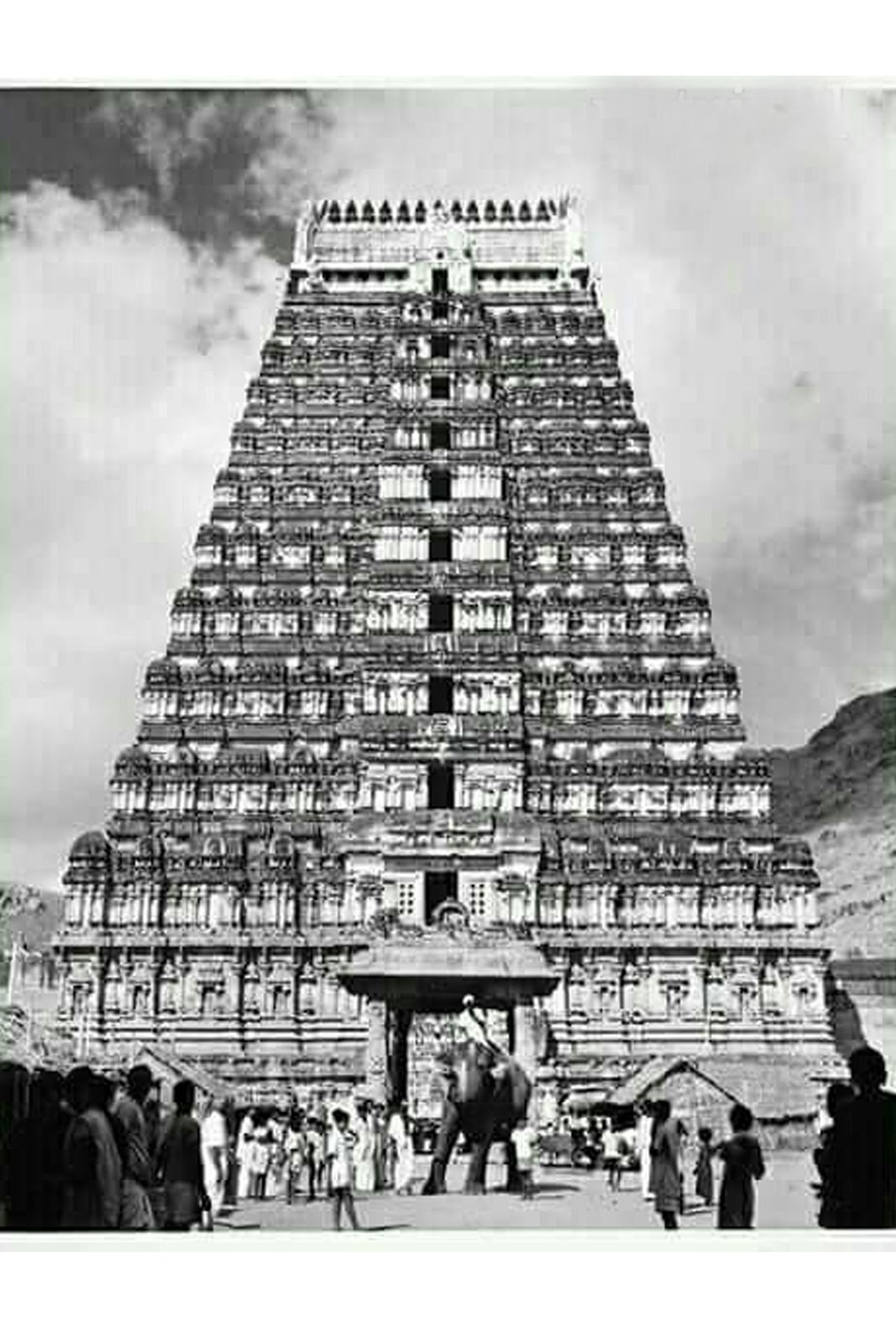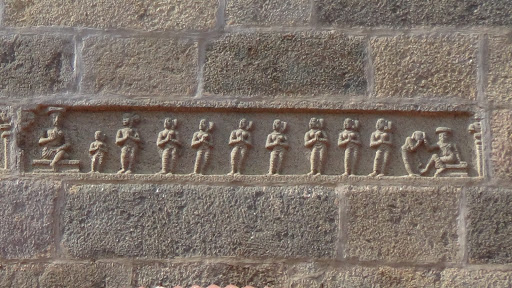The lineages of regent Kings of Tiruvannamalai and their
Architectural contributions to the Arunachaleshwara temple
The more than 100 stone inscriptions of Tiruvannamalai reveal that Cholas were the early regent kings of Tiruvannamalai who built the smaller shrines of the Arunachaleshwara temple. They were followed by the Kadavarayas, the Hoysalas, the Pandyas, the Vijayanagara kings and the Nayaks, who progressively developed the temple architecture to its full fledged state as seen today.
The Kadavarayas were feudatories of the Chola kings in the 13th century but later defied their authority. One of them – Kadavan Kopperunjingan – even imprisoned king Rajaraja Chola III. It was then that the Hoysala Kings who were ruling over the Dwara-Samudra in Mysore intervened and re-established the Chola reign briefly. The Hoysala chieftains were in de facto power under the Cholas until the Pandya kings expanded their territory and assumed power in this region (13th – 14th century). Later, the Muslim kings invaded from the North (A.D. 1310 – 1327). At that time, the Hoysala King Ballala III became active and countered the Muslim attacks (A.D. 1318 to 1343). In 1338, he assumed the title ‘emperor of the South’. His stone inscriptions (499 and 509 dated A.D. 1340) in the walls of the first prakara (circumambulation path of the temple) call him Pratapachakravartin – Vira Vallaladeva. The region was later ruled by the Vijayanagara kings (14th century). From them the power went to the Nayak kings (15th century). In the 10th century, the region came under the rule of the Rashtrakuta king Kannaradeva.
The central Sanctum Sanctorum of the Arunachaleshwara temple was built during the reign of King Aditya Chola I (A.D 871-955) as indicated in the stone inscriptions (469 – 76; 50 – 65) and it has taken nearly 1000 years to complete the configuration of the Tiruvannamalai Arunachaleswarar temple. The inscriptions are in Tamil Sanskrit and Kannada languages and reveal important data on the social, political and economical happenings of the early pre-historic years.
The first prakara (circumambulation path around the temple) has been built during the period of King Rajendra Chola I and Rajadhiraja Chola I (A.D. 1012 – 1054) as per inscriptions (478, 489, 492; 67, 68, 82). The Vimana (tower) of the central shrine of Annamalayar, the presiding deity, was gilded, gilded by a Bana dynasty chieftain Rajarajan Ponparappinan also called Vanakovaraiyas of Arkalur (Inscription No. 557) . The Bana dynasty served the Chola dynasty and was therefore involved in its architectural works.
To name a few important architectural works, succeeding the Cholas, the Hoysalas built the Vallala-gopura (tower) named after the Hoysala king Veera Vallala Maharaja (Stone inscription 498), the Vijayanagara king Krishnadevaraya built the 100-pillared and 1000-pillared mandapam (hall), the tank near it and the eleven-storey gopura (Stone inscription 574, 165), while the Nayak King Sevappa of Thanjavur built the main and tallest Eastern Gopura (tower) called the Raja Gopura.

(The Raja Gopuram (main temple tower facing East) built by the Nayak King Sevappa.)
Stone Inscriptions on the Tiruvannamalai temple walls that depict as evidence, the ecosystem and lifestyle of the Kings and their subjects.





